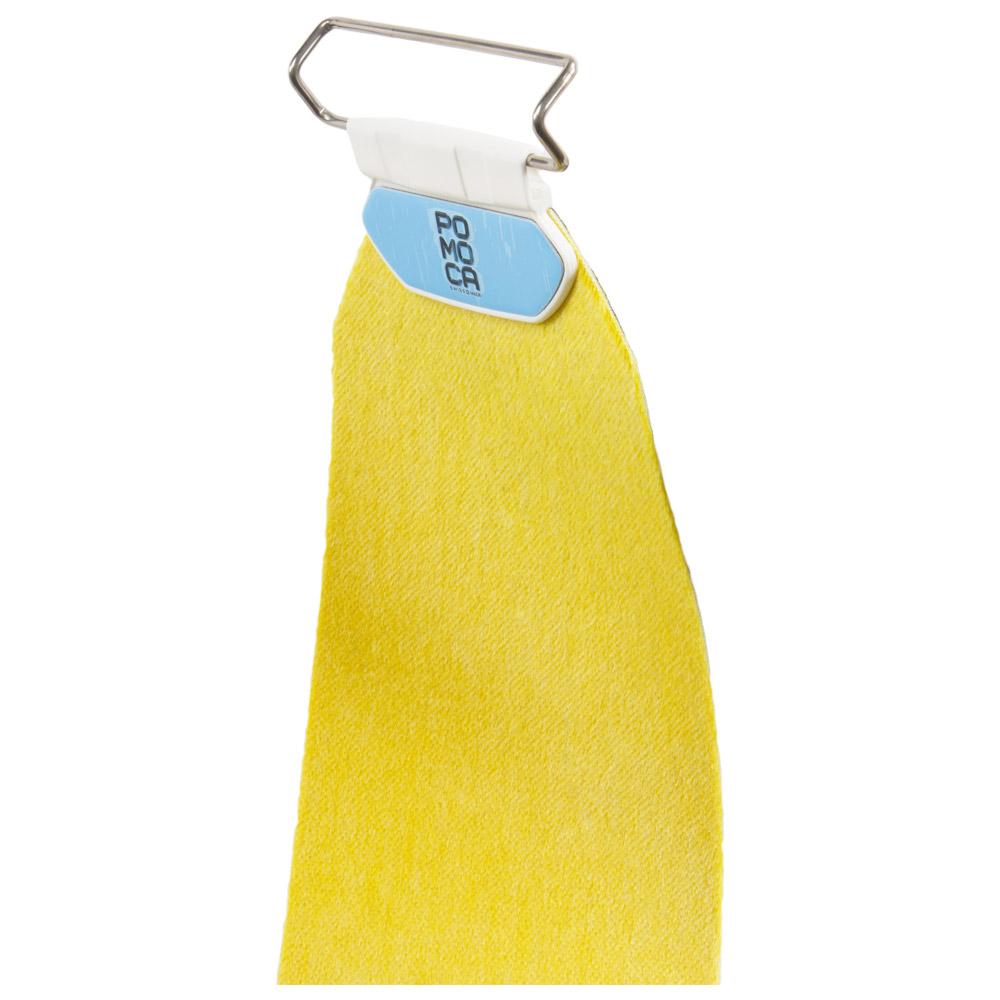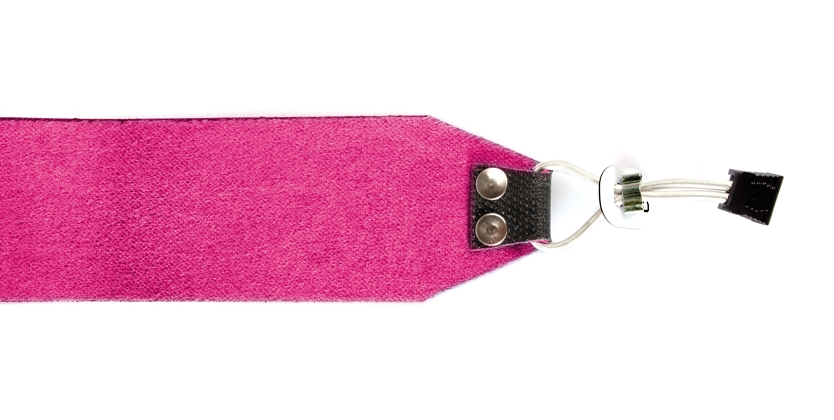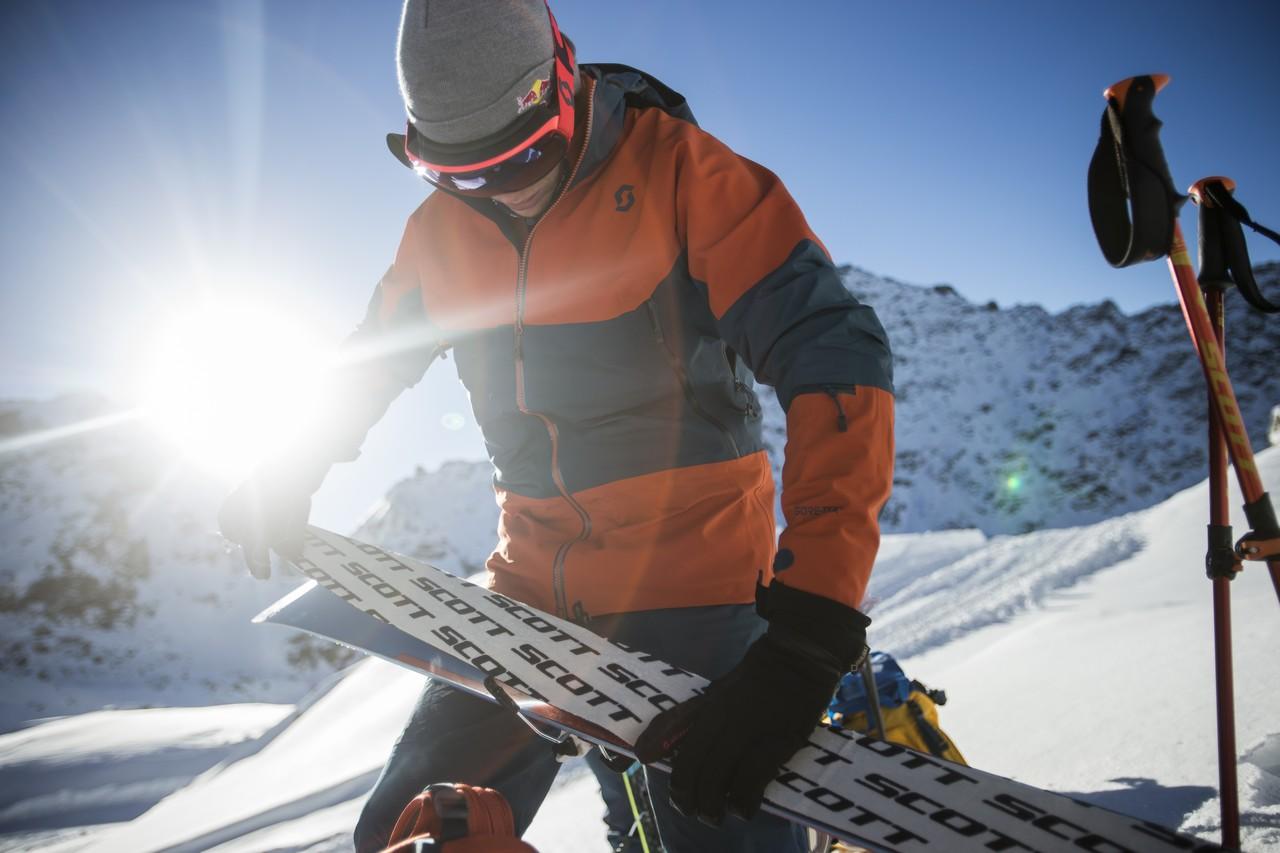Climbing skins are one of the main elements in a tourer setup. No skins, no ski touring. Touring skins come right under your touring skis and provide grip for you to climb up a slope without sliding backwards.
A skin is made of one sticky surface that comes onto the ski base, the other side in contact with the snow is made of fibre and the skin features a clipping system so you can attach it to the ski.
How does the skin stick to the ski?
The most reliable and most popular way until very recently was glue. Glue ensured a strong grip onto the ski base but it had a few weaknesses (maintenance, storage, etc.).
Up until now, glued skins were your only option but manufacturers have developped new technologies allowing the skins to stick to the ski without glue. We call them 'glueless skins'.


1 - Climbing skins with glue
They are the most popular skins and stood the test of time. Climbing skins with glue have been around forever and were used by all ski tourers. The side in contact with the ski base is simply covered with glue which delivers a great grip and ensures it to stay in place when you climb.
However, skins with glue require a lot of maintenance and they are not the most convenient to use. You need to reapply glue on a regular basis if you want them to stick properly and you need to store them on a specific net when you reach the summit to prevent them from sticking to each other. Also, every time you handle them you get glue on your hands which is not the most pleasant feel ever.

2 - Glueless skins
In order to skip these annoying bits of maintenance, manufacturers like Gecko have developed glueless skins which are truly revolutionary. These skins are adhesive, they still stick to the ski like would a glue skin, but they don't carry any glue. By what magic? They use molecular suction properties of silicon or acrylic and we tell you, it's amazing.
They are a lot easier to use and to maintain than glue skins for the simple reason that you don't need to reapply glue, never. You won't get your hands dirty when handling them and you can store them easily by folding them together. They peel apart very easily, unlike glued skins. You can wash them with warm water to get dust or dirt off and they'll be as new. These glueless skins are a little more expensive than glue skins but they're so convenient that it's worth taking the risk!.

What materials are used in a climbing skin?
Originally, climbing skins were actually real seal skins, with short and stiff hair. Fortunately, the industry hasn't been using animal skins for a very long time. Modern skins are now made of synthetic fibres and even if the name "skins" has remained, skins are not skins anymore. There are 3 main types of skins: Mohair skins, Synthetic skins and hybrid or mixed skins offering the best of both mohair and synthetic. You will choose your skins according to your needs so we'll break down the pros and the cons for each type of skin for you.
1 - Mohair skins

For the record, the mohair is a fabric coming from the Angora goat. It delivers great gliding properties when moving forward and a solid traction with a great anti-slip effect when moving backwards. Unfortunately, mohair skins are fragile and wear out quickly. Snow tends to build up between the skin fibres which reduces traction and weighs you down and remember, when touring, weight is your ennemy. This is why it is important to maintain your skins on a regular basis to keep up with performance. Mohair skins are generally the choice of racers.
2 - Synthetic skins

Made of synthetic materials (generally nylon), these skins are the most durable but they don't glide as much as mohair skins. They are not very common in stores, synthetic skins are suited for a very specific touring use.
3 - Mixed or hybrid skins: mohair + synthetic

Generally made of 70% mohair and 30% nylon, mixed skins offer the best compromise between glide, traction and durability. They are perfectly suited for both occasional and regular tourers.
How to attach your climbing skins to your skis?
If skins stick to your ski base thanks to glue or silicon, you still need to attach them with actual hardware to your tip and (sometimes) to your tail. There are different kinds of attachements. Hooks or loops that come over the tip, pins or inserts, stretchy connectors, there are as many systems as there are brands. There are also manufacturers who developed their own proprietary system that only work with their skis so make sure you ask for advice before you order your skins!
1 - Hook attachments:
The hook (which can be metallic or plastic), comes over the tip of the ski and prevents the skin from moving while skinning up. It is the most popular system and probably the one that works with most skis.



2 - Hook attachment and tail connector (or stretcher):
On top of the tip hook, you get a stretchy tail connector (sometimes called Camlock system). The skin is locked from both sides and remains in place even during long tours. The only downside is, it makes the whole setup heavier. You'll find it mainly on wider skis (over 80mm at the waist).



3 - Attachment with inserts:
Skins with inserts come onto the tip of the ski in a specific slot. These systems help saving even more weight as they are very light and minimalist.

4 - Stretchers:
This is the system of choice for racers as it allows to take off the skin with the ski still on. However, skins with stretchers only work with a few skis from specific touring brands like Dynafit or Trab.


So, what skin should I get?
You should consider several criteria:
1 - your ski sidecuts:
If certain manufacturers offer skins that are trimmed to fit their skis, most of the time you will need to trim your skins to your skis. When you buy a pair of skins, always choose a skin that is wider than your ski, this will leave you room for adjustments. For instance, if you have a 96mm-waisted ski, buy a skin that's at least 100mm wide.
2 - your style of touring:
- Racers should use a glue skin with competition attachments. The skin materials will depend on the type of snow and on the type of race.
- For regular tourers who look for performance, better pick a glue skin with a tip attachment and a mixed construction.
- Occasional tourers looking for a decent amount of performance can either go for glue or glueless skins with a tip connector and a mohair skin.
- Skiers who begin at ski touring will prefer glueless mixed skins (mohair + nylon) with tip and tail attachments.

